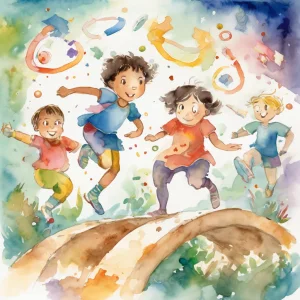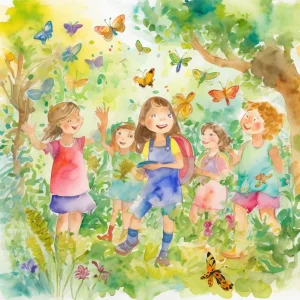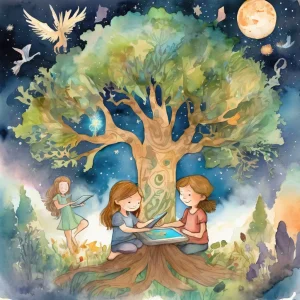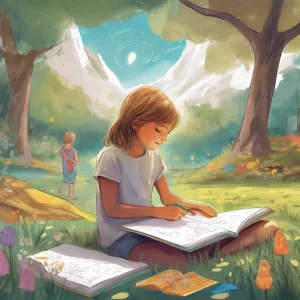Activity
Similar Activities
Musical Instrument Exploration: Symphony of Sensory Play
Children’s Age: 1.5–2 years
Activity Duration: 10 minutes
Explore the Musical Instrument Exploration activity for children aged 18 to 24 months, promoting play skills, self-regulation, and communication development through a sensory-rich …
Activity Duration: 10 minutes
Nature's Balance Trail: A Tale of Textures and Tales
Children’s Age: 1.5–2 years
Activity Duration: 5 minutes
Nature's Balance Trail is an engaging activity tailored for children aged 18 to 24 months to discover nature, enhance balance, and boost early literacy skills through storytelling.…
Activity Duration: 5 minutes
Enchanted Fort Adventures: Building a Storytime Fort
Children’s Age: 4–6 years
Activity Duration: 20 minutes
Engage children aged 48 to 72 months in the "Building a Storytime Fort" activity for a creative storytelling experience. This activity promotes adaptive and cognitive development, …
Activity Duration: 20 minutes
Diversity Dreams: Culture Collage Adventure
Children’s Age: 10–12 years
Activity Duration: 45 minutes
Explore diversity and friendship with the "Culture Collage" activity for kids aged 10-12. Encourage play skills, self-regulation, and understanding of society through creating coll…
Activity Duration: 45 minutes
Adventure through the Healthy Lifestyle Obstacle Course
Children’s Age: 4–6 years
Activity Duration: 15 – 20 minutes
Engage children aged 48 to 72 months in the "Healthy Lifestyle Obstacle Course" to promote self-regulation and cognitive development through fun physical activities. Set up station…
Activity Duration: 15 – 20 minutes
Enchanted Nature Scavenger Hunt with Family and Friends
Children’s Age: 6–10 years
Activity Duration: 15 – 30 minutes
Explore the "Family and Friends Nature Scavenger Hunt," a fun-filled activity tailored for children aged 6 to 10. This engaging hunt fosters observation skills, teamwork, and envir…
Activity Duration: 15 – 30 minutes
Enchanted Eco-Friendly Digital Art Gallery Journeys
Children’s Age: 3–4 years
Activity Duration: 20 minutes
The Eco-Friendly Digital Art Gallery activity is tailored for children aged 36 to 48 months to enhance self-regulation skills and eco-consciousness through a creative and education…
Activity Duration: 20 minutes
Nature's Eco-Counting Adventure: Outdoor Quest and Learning
Children’s Age: 7–10 years
Activity Duration: 40 minutes
"Eco-Counting Adventure" is an engaging activity designed for children aged 7 to 10, blending technology with learning. It aims to foster ecological awareness, cognitive skills, se…
Activity Duration: 40 minutes
Enchanted Clay Sculpture Storytelling Forest
Children’s Age: 6–10 years
Activity Duration: 15 – 30 minutes
Engage children aged 6 to 10 in the Clay Sculpture Storytelling activity to foster cultural understanding, play skills, and self-regulation. Gather air-dry or sculpting clay, a tab…
Activity Duration: 15 – 30 minutes
Empathy Tales: The Storybook Creation Adventure
Children’s Age: 2–12 years
Activity Duration: 10 – 15 minutes
This activity helps children aged 2 to 6 develop empathy by creating a personalized storybook. You will need paper, crayons, stickers, scissors, glue, and story prompts like "A Day…
Activity Duration: 10 – 15 minutes
Nature Story Stones Activity
Children’s Age: 3–12 years
Activity Duration: 35 – 40 minutes
Nature Story Stones is a fun activity for kids aged 3 to 12 that boosts creativity, language skills, and spiritual growth. Gather smooth stones, paints, brushes, markers, and varni…
Activity Duration: 35 – 40 minutes
Magical Storytelling: Create Together with Friends
Children’s Age: 4–6 years
Activity Duration: 15 – 30 minutes
In the Create a Story Together activity, children will explore their creativity, language skills, and teamwork. Get small pieces of paper, colored pencils, and a container ready. K…
Activity Duration: 15 – 30 minutes


























